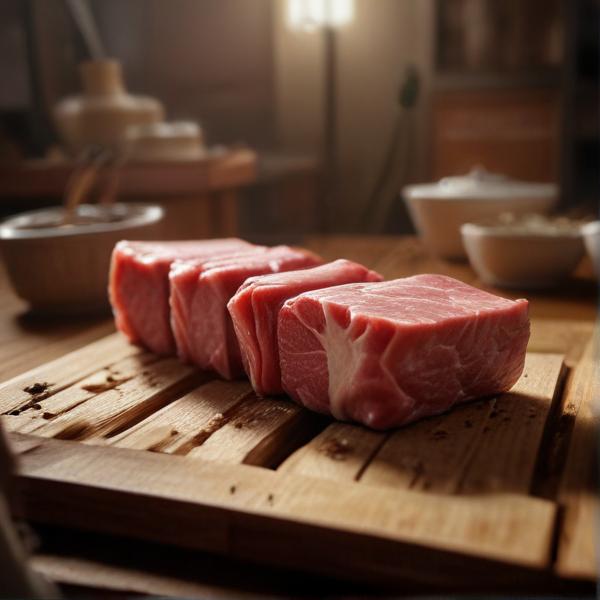基本信息 (Basic Information)
含义与用法 (Meanings & Usage)
中文核心释义 (Core Chinese Meaning): 烧火用的器具,常用于取暖、熔炼、烹饪等
英文核心释义 (Core English Meaning): stove, furnace; a device for burning, heating, smelting, or cooking
象形意义 / 为何这么写 (Pictographic Meaning / Writing Rationale)
文言文释义 (Classical Chinese Meaning)
与现代意义相近,古文中多指烧火或熔炼的器物。Similar to modern meaning; in classical texts, it mainly refers to implements for burning or smelting.
深入学习 (In-depth Study)
字源故事 (Origin Story)
字形演变 (Character Evolution)
常用词语和例句 (Common Words & Examples)
火炉 (fire stove, heater)
冬天我们会用火炉取暖。
Eng: We use a stove to keep warm in winter.
电炉 (electric stove)
厨房里装有现代电炉。
Eng: There is a modern electric stove installed in the kitchen.
熔炉 (smelting furnace, crucible)
钢铁是在高温熔炉中炼成的。
Eng: Steel is made in a high-temperature smelting furnace.
相关成语 (Related Idioms)
相关成语信息待补充。Related idiom information pending.
多语言翻译 (核心释义) (Translations (Core Meaning))
- French: fourneau, poêle
- German: Ofen, Herd, Schmelzofen
- Spanish: estufa, horno, crisol
- Italian: fornello, stufa, fornace
- Portuguese: fogão, forno, fornalha
- Russian: печь, плита, плавильная печь
- Arabic: موقد، فرن، صهر
- Persian: اجاق، کوره، اجاق گاز
- Dutch: fornuis, oven, smeltoven
- Polish: piec, kuchenka, piec hutniczy
- Vietnamese: lò (bếp, lò luyện, lò sưởi)
- Ukrainian: піч, плита, плавильна піч
视频学习资源 (Video Learning Resources)
通过以下链接在热门视频网站搜索 "炉" 的更多讲解:
Search for more explanations of "炉" on popular video sites:
- 在 Bilibili.com 搜索 "炉 字源 说文解字" (Search on Bilibili)
- 在 YouTube.com 搜索 "炉 character origin etymology" (Search on YouTube)
网络参考 (Web References for "炉") ()
网络内容摘要 (Web Content Summary):
```html炉是指用来做饭或取暖的器具。 "炉" refers to a utensil used for cooking or heating.
- 字形起源: “炉”字在甲骨文中形象地描绘了陶制的炉灶,有时下方加“火”字,强调其与燃烧有关。 Character origin: The oracle bone script of "炉" pictorially depicts an earthen stove, sometimes with the "fire" radical below, highlighting its relation to burning.
- 演变与材质: 在金文中出现“金”作偏旁,表明后世的炉已多用青铜或铁制品。 Evolution & Material: In bronze script, the metal radical was added, indicating that stoves/lurs were then often made of bronze or iron.
- 常见用法: “炉”常见于“炉子”“电炉”“火炉”等词语。 Common phrases: "炉" often appears in "炉子" (stove), "电炉" (electric stove), "火炉" (fire stove/heater), etc.
- 易混点: “炉”与“灶”(zào,kitchen stove)等字意义接近,但“炉”更偏向指器具本身;“炉”与“盧”无关,注意区分。 Common confusion: "炉" is related in meaning to "灶" (kitchen stove), but "炉" refers more specifically to the utensil itself; do not confuse with "盧" (a different character).
- 文化背景: 早期甲骨文有“火”与“虎头”等形,反映古时以动物为主要食材,显示了烹饪与生活习俗的演变。 Cultural context: Early forms showed "fire" and "tiger's head" components, reflecting that animal products were staple foods in ancient society and how cooking practices evolved.
信息有限,暂未发现与“炉”相关的重要成语。 Information is limited; no major idioms related to "炉" are identified.
```炉象形字典_炉盧,爐,鑪象形字_炉字义引申_炉字形解析_象形文字:炉
"炉" 本指做饭取暖的器具。《说文》: "炉,方炉也" 。甲骨文1-2写 作" 、 " ,像陶制炉灶形。 甲骨文3写作" " ,下边加"火"表示炉是 燃火的器具,同时火上改为虎头和残骨(歺,读è),反映出当时古人的主食 以动物为主。 金文用"金"作偏旁,说明当时的炉已普遍使用青铜或铁(也有 ...
炉的字源字形 - 漢典
傳抄古文是指漢以後歷代輾轉抄寫的先秦文字,傳抄古文與出土戰國文字既相互聯繫,又互有區別。聯繫是指兩者原本都是流行於戰國時期的文字,區別是指這些古文經過歷代傳抄轉寫而產生種種的變異,與出土的戰國文字已有不同程度的差別,有的甚至相差很遠。
更多图片 (炉 More Images) ()
